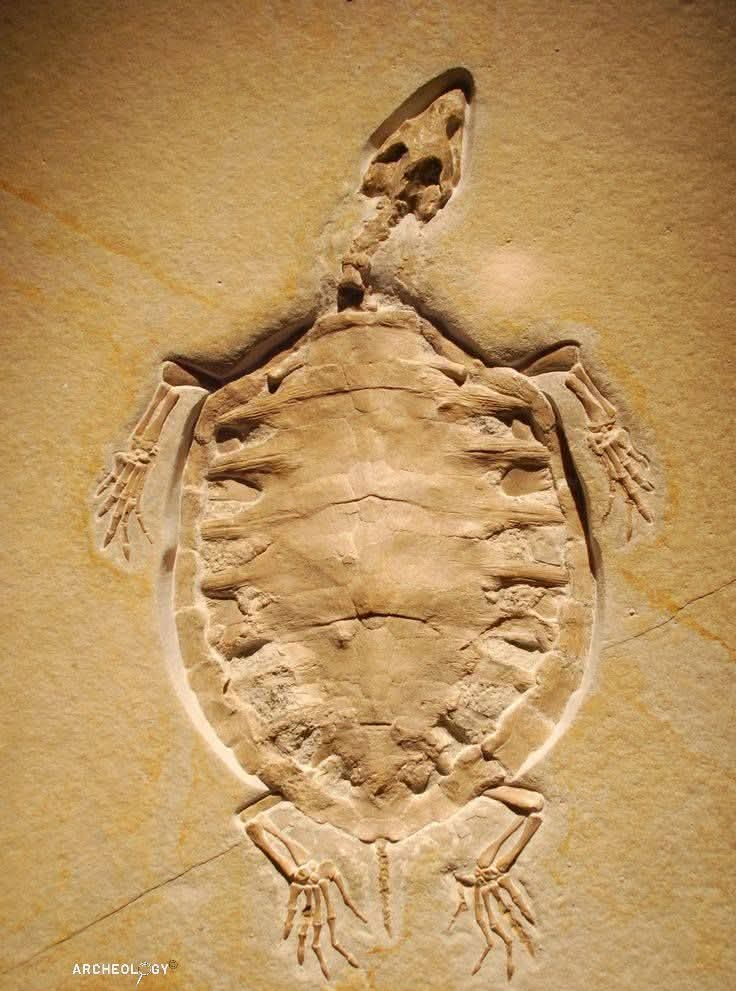This remarkably preserved fossil represents an ancient turtle that lived during the Late Jurassic period, approximately 150 million years ago. Encased in fine-grained limestone, the fossil comes from the world-renowned Solnhofen region of southern Germany — a site famous for yielding some of the most detailed and pristine fossils ever discovered, including the iconic Archaeopteryx. The unique geological conditions of this area created an ideal environment for fossilization, capturing life with exceptional clarity and preserving even delicate structures like skin, limbs, and soft tissues.This turtle specimen offers an extraordinary glimpse into prehistoric aquatic ecosystems. The intricate details of its carapace (upper shell) and plastron (lower shell) highlight the evolutionary refinements that helped early turtles adapt to life in water. These adaptations include a streamlined, protective shell and limb modifications that hint at efficient swimming capabilities. The limbs, particularly the flipper-like front legs, show early developments toward the morphology seen in today’s sea turtles.Fossils like this one are crucial to our understanding of vertebrate evolution, especially the transition from terrestrial to aquatic lifestyles. Turtles are one of the oldest reptile groups still alive today, with ancestors that first appeared over 200 million years ago. This specimen helps fill in gaps in the fossil record, offering evidence of how certain anatomical features evolved over time to enhance mobility, defense, and environmental adaptability.Furthermore, the Solnhofen limestone beds are part of an ancient lagoon ecosystem, where fine sediment and low oxygen levels helped preserve organisms in astonishing detail. This turtle likely lived in shallow coastal waters teeming with other marine and semi-marine life, including ammonites, fish, marine crocodiles, and early birds. Its fossilized remains capture a snapshot of Jurassic biodiversity, providing valuable context for the broader ecological relationships that existed at the time.Beyond its scientific value, this fossil also serves as a powerful reminder of Earth’s deep history. The turtle’s silent, stone-encased form connects us across millennia, illustrating the continuity of life and the slow, intricate processes that shape species over geological time. Studying such specimens deepens our appreciation for the complexity of life’s evolution and the resilience of ancient lineages that, despite mass extinctions and shifting climates, still endure in today’s ecosystems.
